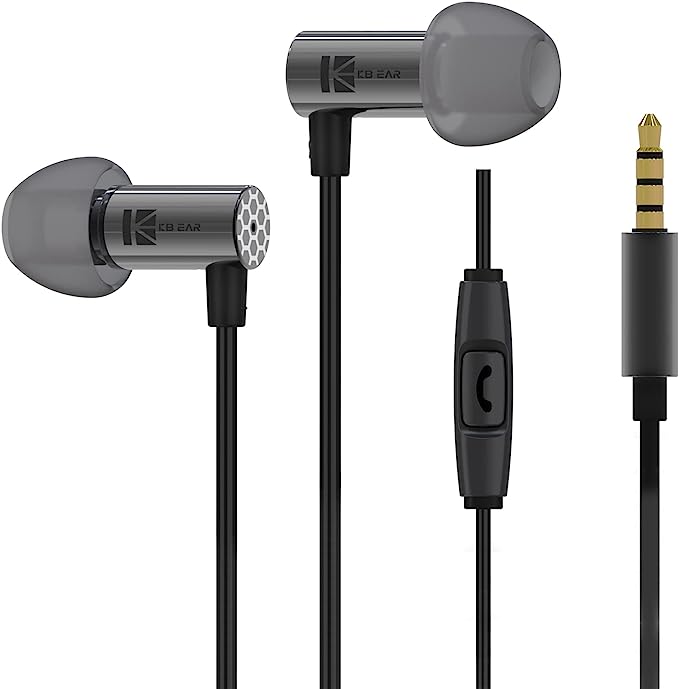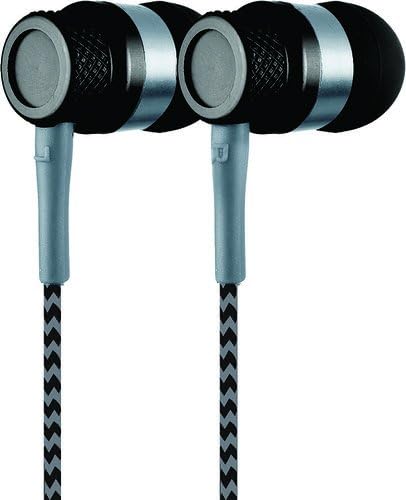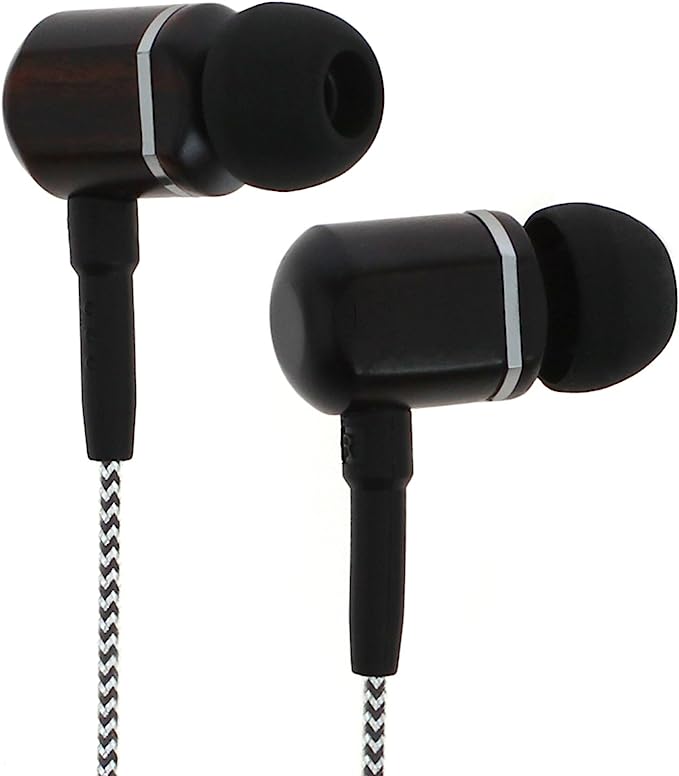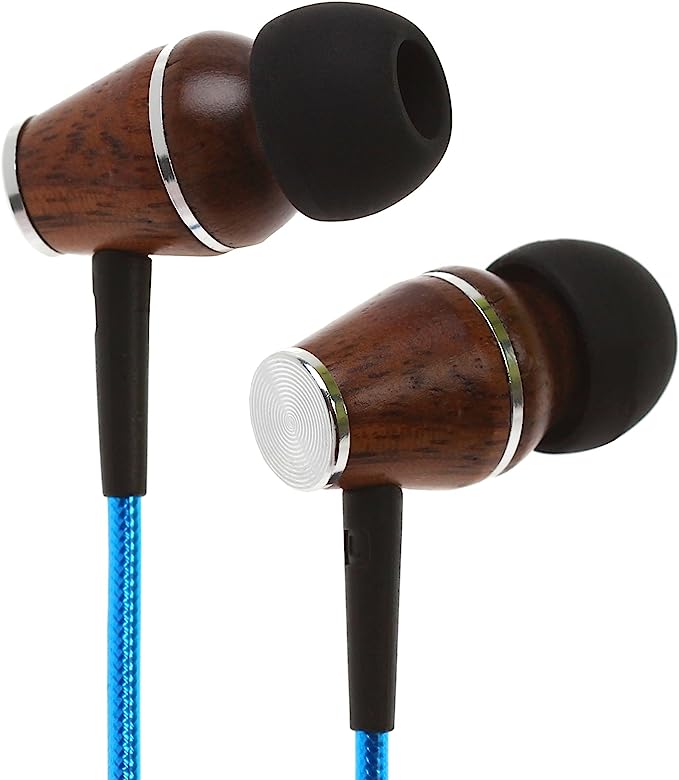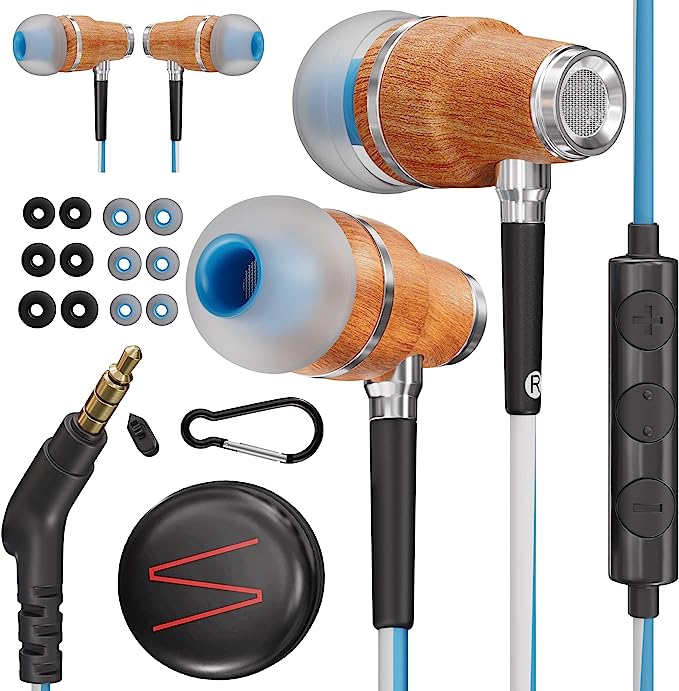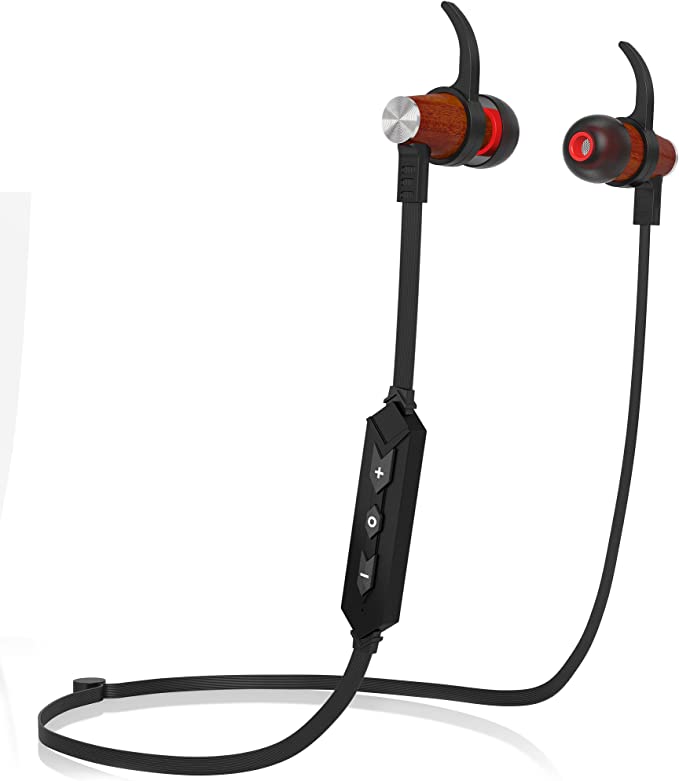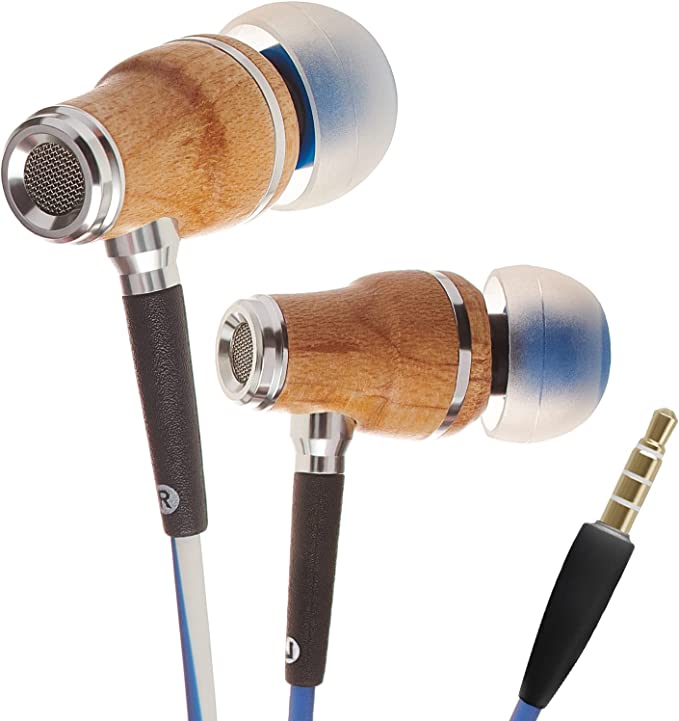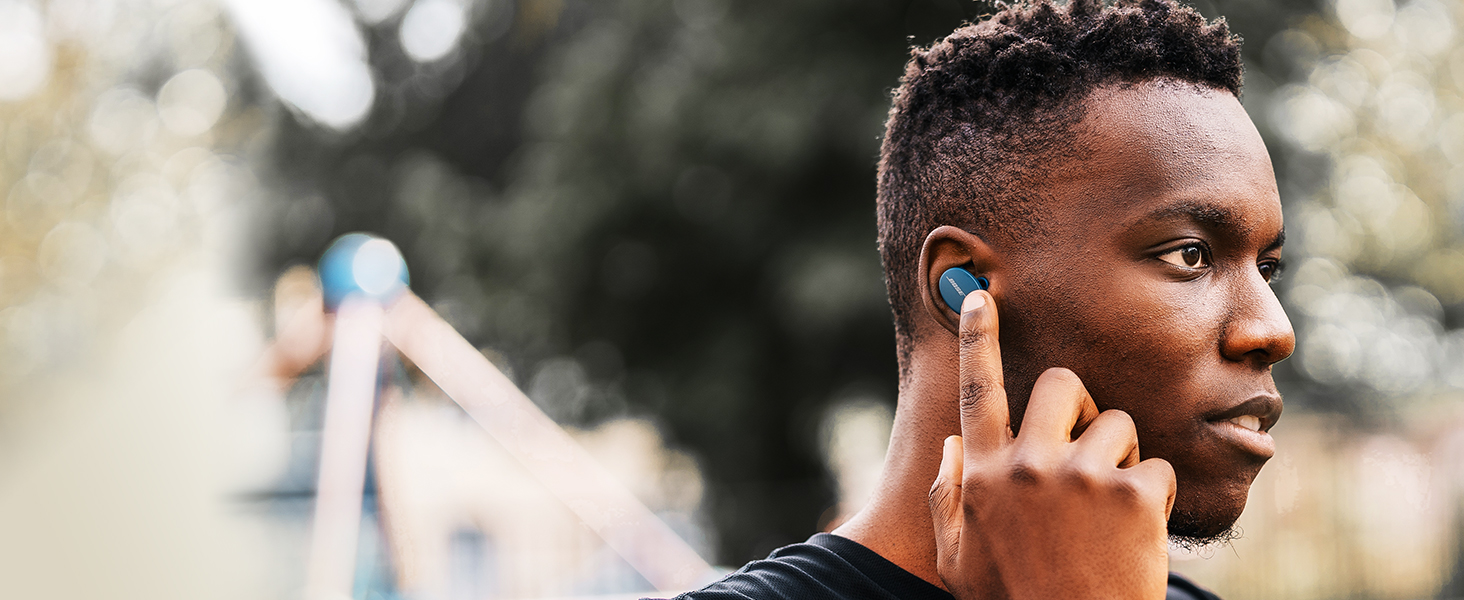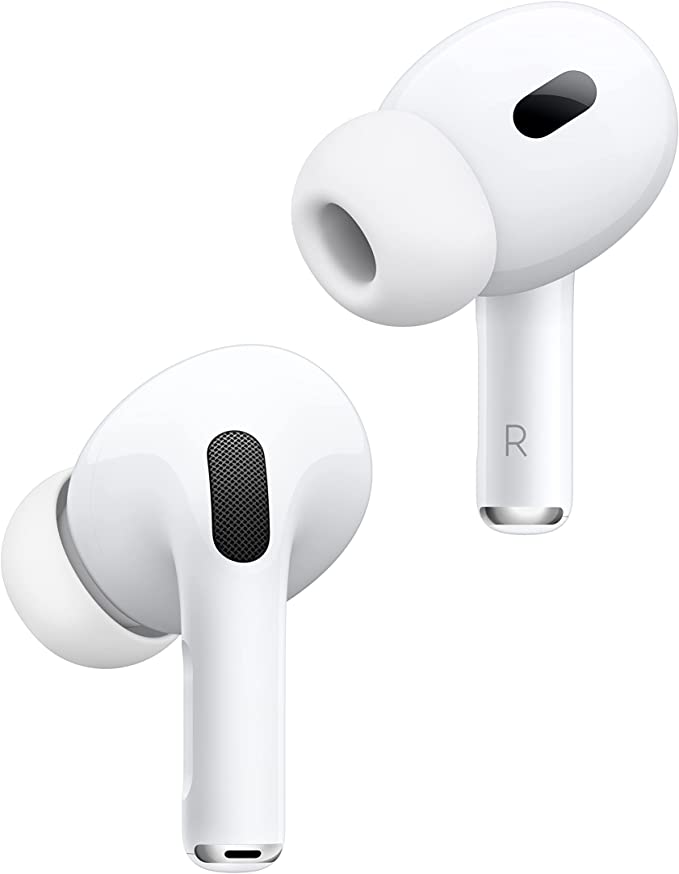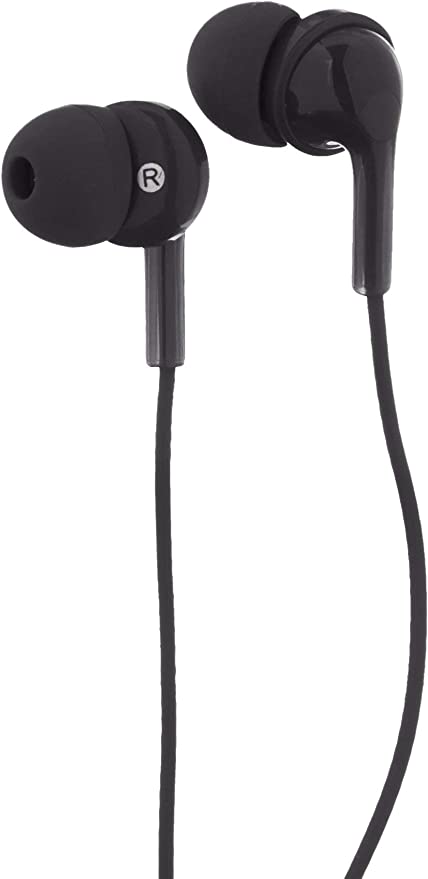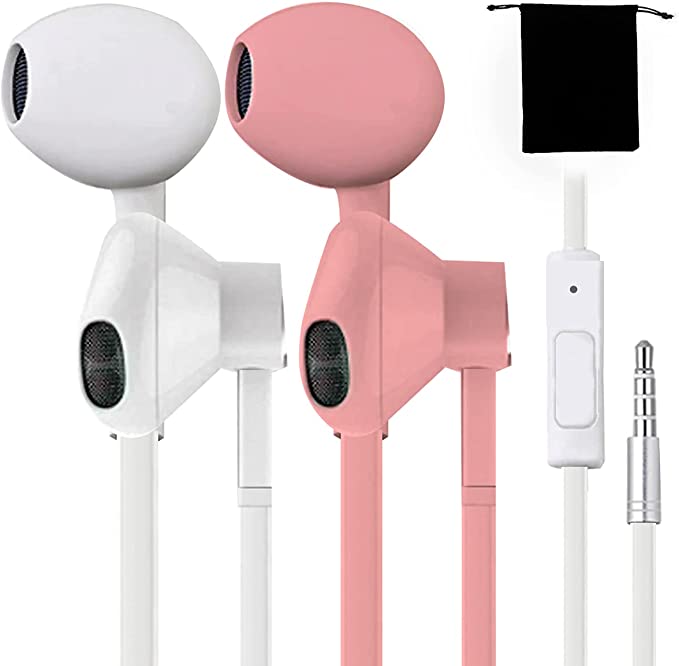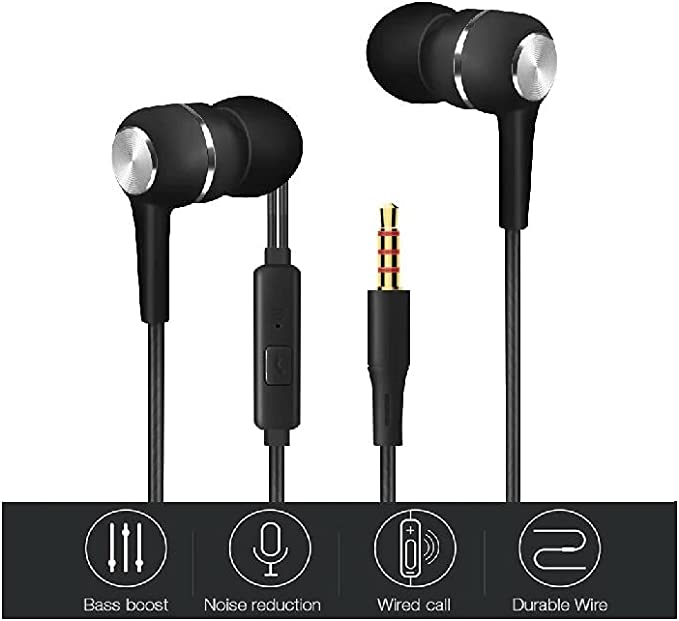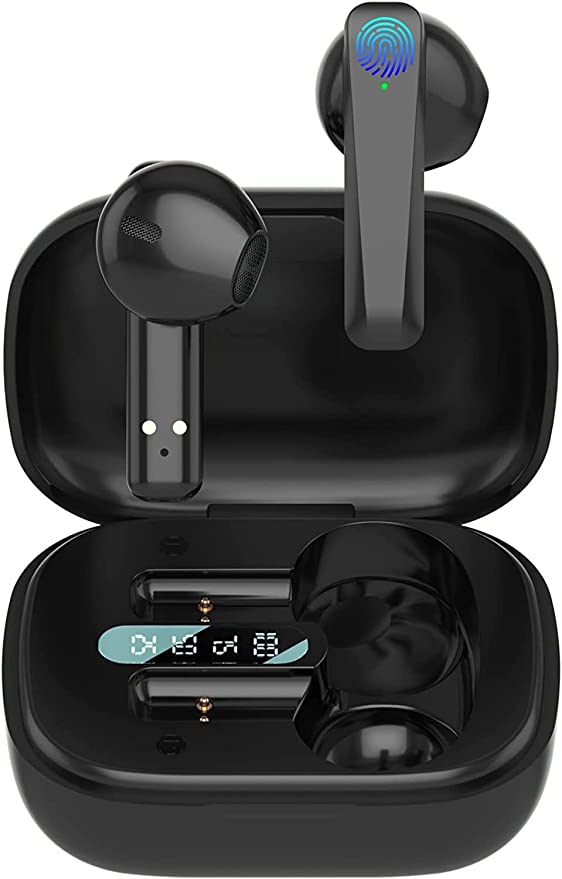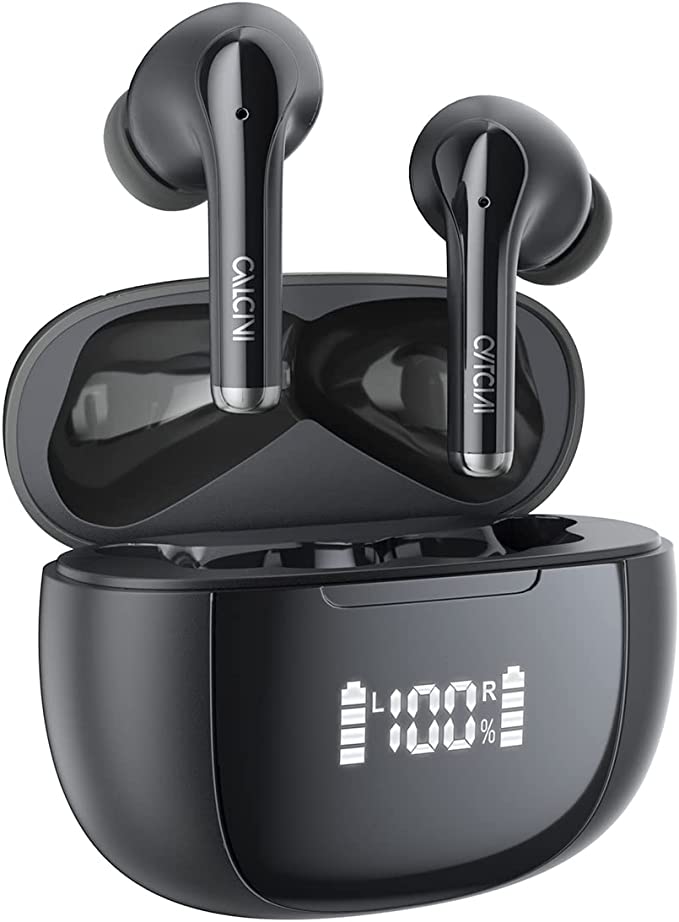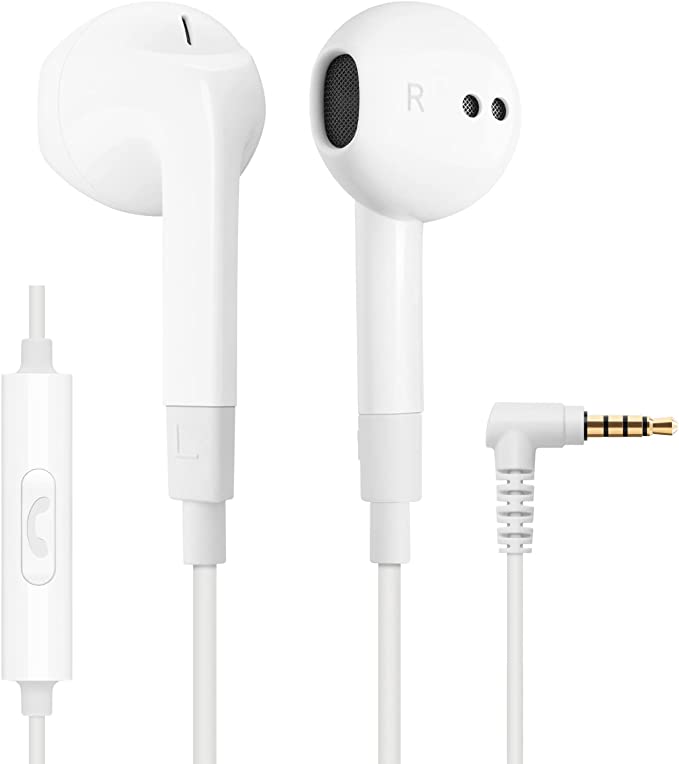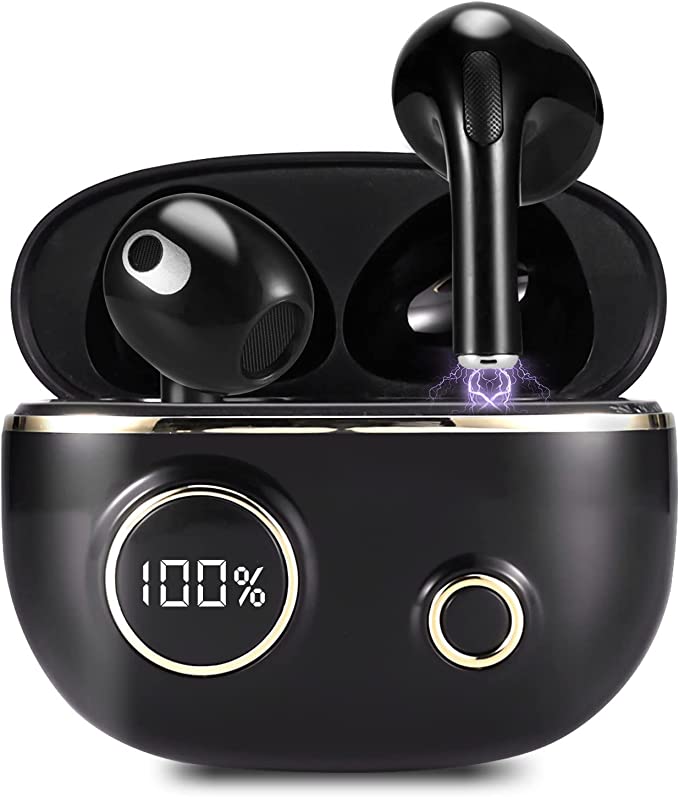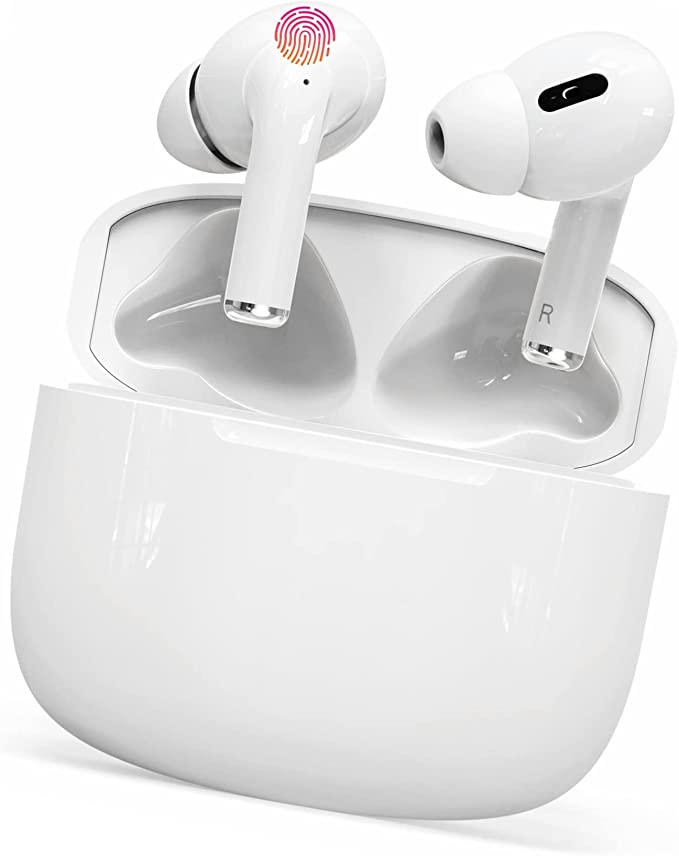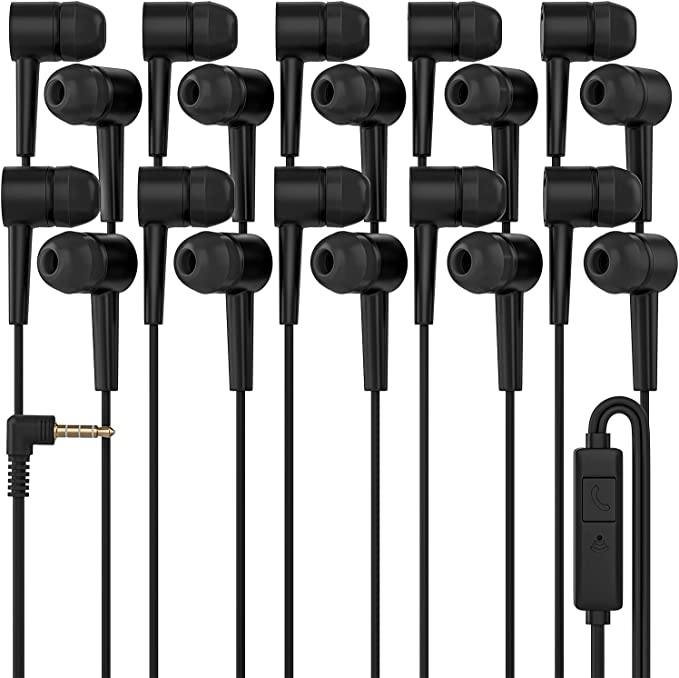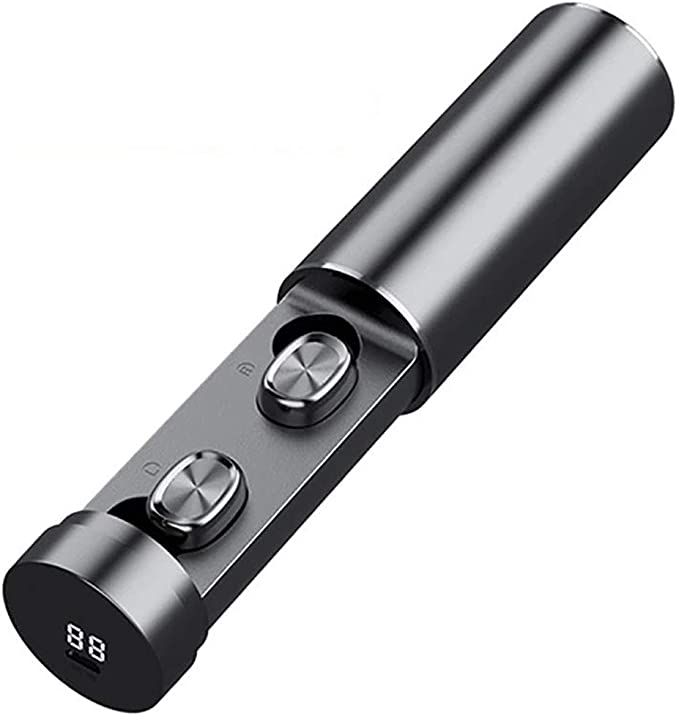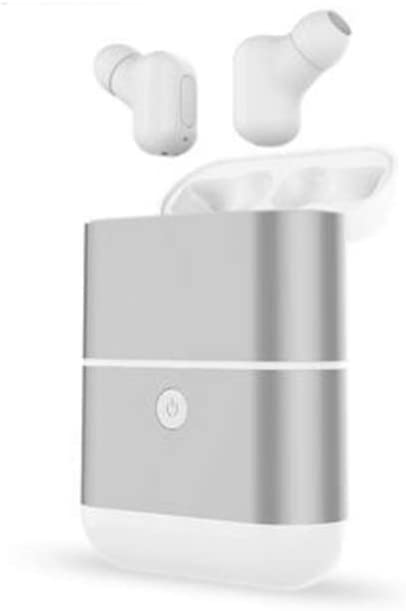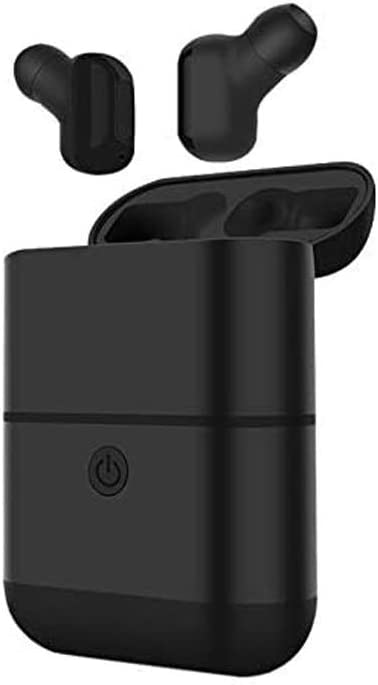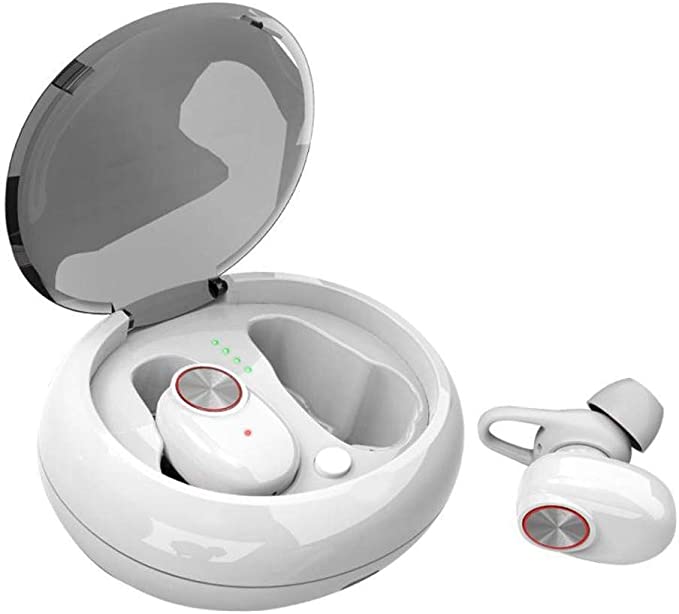Symphonized NRG MFI Wired Headphones: Crystal-Clear Sound for Your iPhone
Update on March 20, 2025, 6:12 a.m.
In our increasingly digital world, sound surrounds us. From the music that fuels our workouts to the podcasts that inform our commutes, we rely on headphones to deliver a personal and immersive audio experience. But not all headphones are created equal. Just like a finely crafted musical instrument can produce a richer, more nuanced sound than a poorly made one, high-quality headphones can reveal subtleties and details in your audio that you might otherwise miss. With a quality pair of earphones, you’re not just hearing sound; you’re experiencing it. The iPhone, renowned for its multimedia capabilities, deserves a companion that can deliver audio fidelity to match. This is particularly relevant for those who appreciate the subtleties of lossless audio.

Digital vs. Analog: A Quick Primer
For decades, headphones used analog signals. Think of an old record player: the needle vibrates in the groove, creating a physical representation of the sound wave. This vibration is then amplified and sent to the headphones. The problem? Analog signals are susceptible to interference. Every time the signal is transferred or amplified, there’s a chance for noise and distortion to creep in.
Digital audio, on the other hand, is like a perfectly precise blueprint. Instead of a physical representation, the sound is encoded as a series of numbers (bits). This digital signal can be copied and transmitted without any loss of quality. Think of it like copying a text document versus photocopying a photograph. The text document will remain perfectly clear, while the photograph will lose detail with each copy.

The Lightning Advantage: Why Digital Matters for iPhone Users
Apple’s decision to switch to the Lightning connector for audio output on iPhones was a significant step towards embracing the benefits of digital audio. The Lightning connector transmits audio digitally, eliminating the need for a digital-to-analog converter (DAC) within the phone itself. This means the crucial conversion from digital to analog happens inside the headphones (or an external DAC), giving headphone manufacturers more control over the audio quality.
But it’s not just about the digital signal. It’s also about control and compatibility. This is where MFi certification comes in.
Decoding MFi: A Deeper Look
MFi stands for “Made for iPhone/iPod/iPad.” It’s Apple’s licensing program for accessories, ensuring that they meet specific performance and safety standards. Think of it as a seal of approval, guaranteeing that the headphones will work seamlessly with your Apple device.
The MFi certification process is rigorous. It involves testing for compatibility, durability, and safety. This includes verifying that the Lightning connector meets Apple’s specifications, that the headphones won’t damage your device, and that the audio quality meets certain standards. For you, the user, this means peace of mind. You know the headphones won’t suddenly stop working after a software update, and you can be confident that they’re not going to harm your expensive iPhone.
Wood You Believe It?: The Acoustics of Wood in Headphones
Now, let’s talk about something a little less high-tech, but equally important: wood. You might be surprised to see wood used in headphones, a seemingly modern piece of technology. But wood has been used in musical instruments for centuries, and for good reason.
Think of a violin or a guitar. The wooden body of the instrument isn’t just for show. It vibrates along with the strings, amplifying the sound and giving it a rich, warm tone. This is called acoustic resonance. Different materials vibrate in different ways, and wood has unique properties that make it particularly well-suited for audio applications.
Wood, especially hardwoods, tends to have a lower resonant frequency than plastic or metal. This means it vibrates more slowly and smoothly, producing a warmer, more natural sound. It also tends to damp vibrations more quickly, reducing unwanted echoes and distortions. While the exact type of wood used in the Symphonized NRG MFI isn’t specified in the available materials, the principle remains the same: the wooden housing contributes to a more organic and pleasing sound profile, likely enhancing the bass and midrange frequencies. Imagine the difference between tapping on a plastic cup and tapping on a wooden block – the wooden block produces a fuller, less harsh sound.
Inside the Shell: How Earbud Drivers Work
The heart of any headphone is the driver. This is the tiny speaker that converts the electrical signal into sound waves. Most earbuds, including the Symphonized NRG MFI (though this should be confirmed), use what’s called a dynamic driver.
Think of a dynamic driver like a miniature version of a loudspeaker. It has a diaphragm (a thin, flexible membrane), a voice coil (a coil of wire), and a magnet. When an electrical signal passes through the voice coil, it creates a magnetic field. This magnetic field interacts with the magnet, causing the diaphragm to vibrate. These vibrations create sound waves, which travel through the air and into your ear. The faster the diaphragm vibrates, the higher the pitch of the sound. The larger the vibrations, the louder the sound.
Sealing the Sound: Understanding Sound Isolation
The Symphonized NRG MFI headphones are advertised as “noise-canceling,” but it’s crucial to understand that they offer sound isolation, not active noise cancellation (ANC). These are two very different technologies.
ANC uses microphones and electronic circuitry to actively counteract external noise. It’s like fighting fire with fire, but with sound waves. Sound isolation, on the other hand, is a passive approach. It relies on physically blocking out noise.
Think of it like closing a window to reduce street noise. The window doesn’t eliminate the noise, but it significantly reduces it. The ear tips on the Symphonized NRG MFI headphones work in the same way. They create a seal in your ear canal, preventing external sound waves from entering. The better the seal, the more effective the sound isolation. This is why it’s important to choose the correct size of ear tip from the multiple options provided. A good seal not only blocks out external noise but also improves the bass response of the headphones. Think of it like cupping your hands around your ears – you’ll notice that the sound becomes both louder and fuller. The silicone material of the ear tips also plays a role, providing a comfortable and secure fit while also contributing to the sound isolation.
Built to Endure: Considering Cable and Connector Durability
One of the most common frustrations with wired headphones is cable failure. We’ve all experienced it: the sound starts cutting out in one ear, or the cable develops a short near the connector. This is often due to the constant bending and flexing that the cable endures during daily use.
While the provided information only mentions that the cable is “tangle-free,” this suggests a design intended to minimize stress on the internal wires. A tangle-free design typically involves a thicker cable jacket or a different type of braiding or coating that reduces friction and prevents the cable from knotting up. The materials used in the cable’s construction are also critical. Copper is a common conductor, but the purity of the copper and the type of insulation used can affect both the sound quality and the durability of the cable. The strain relief, where the cable connects to the earbud housing and the Lightning connector, is another crucial point to consider. A well-designed strain relief will help to distribute stress and prevent the cable from breaking at these vulnerable points. The MFi certification also offers some assurance of durability for the Lightning connector itself, as it must meet Apple’s standards for strength and resilience.
Beyond the Hype: Understanding Headphone Specifications (Simplified)
While the average listener doesn’t need to be an audio engineer, understanding a few basic headphone specifications can help you make more informed choices. Unfortunately, the provided information doesn’t include specific technical details for the Symphonized NRG MFI, but we can discuss the general concepts.
-
Impedance (measured in ohms): This is a measure of electrical resistance. It’s important because it affects how much power the headphones need to operate. Low-impedance headphones (typically under 32 ohms) are designed for use with portable devices like smartphones, which have relatively low power output. High-impedance headphones require more power and are often used with dedicated headphone amplifiers. Using high-impedance headphones with a low-power device will result in low volume.
-
Sensitivity (measured in dB/mW or dB/V): This indicates how loud the headphones will be at a given power level. Higher sensitivity means the headphones will be louder. However, it’s not the only factor determining loudness; impedance also plays a role.
-
Frequency Response (measured in Hz): This is the range of frequencies that the headphones can reproduce. The typical human hearing range is 20Hz to 20,000Hz (20kHz). A wider frequency response doesn’t necessarily mean better sound, but it does indicate the potential for the headphones to reproduce a wider range of sounds. A “flat” frequency response means the headphones reproduce all frequencies at roughly the same level, which is generally considered desirable for accuracy. However, some people prefer headphones with a “colored” frequency response, such as boosted bass.
It is a shame that the specifications are not provided, because they give great insight into potential sound quality.
The Symphonized NRG MFI: A Synthesis of Science and Design
The Symphonized NRG MFI wired headphones represent a thoughtful approach to earbud design, blending traditional materials with modern technology. The MFi certification ensures seamless compatibility with Apple devices, while the digital audio transmission via the Lightning connector promises a cleaner, more accurate sound. The use of wood in the housing suggests a warmer, more natural sound profile, while the sound isolation provided by the ear tips helps to create an immersive listening experience. While more complete specifications, especially the driver type, impedance, and frequency response curve, would allow for a fuller evaluation, the available information and thoughtful design and build quality make it a compelling option for iPhone users seeking a reliable and enjoyable wired listening experience. The combination of aesthetic appeal, proven compatibility, and a focus on delivering quality sound, sets these wired earbuds apart.
